Sanwa Electronic Instrument Co 92801 2.4GHz Electronic Speed Controller User Manual SV Plus Zero ESC User s Guide
Sanwa Electronic Instrument Co Ltd 2.4GHz Electronic Speed Controller SV Plus Zero ESC User s Guide
User Manual
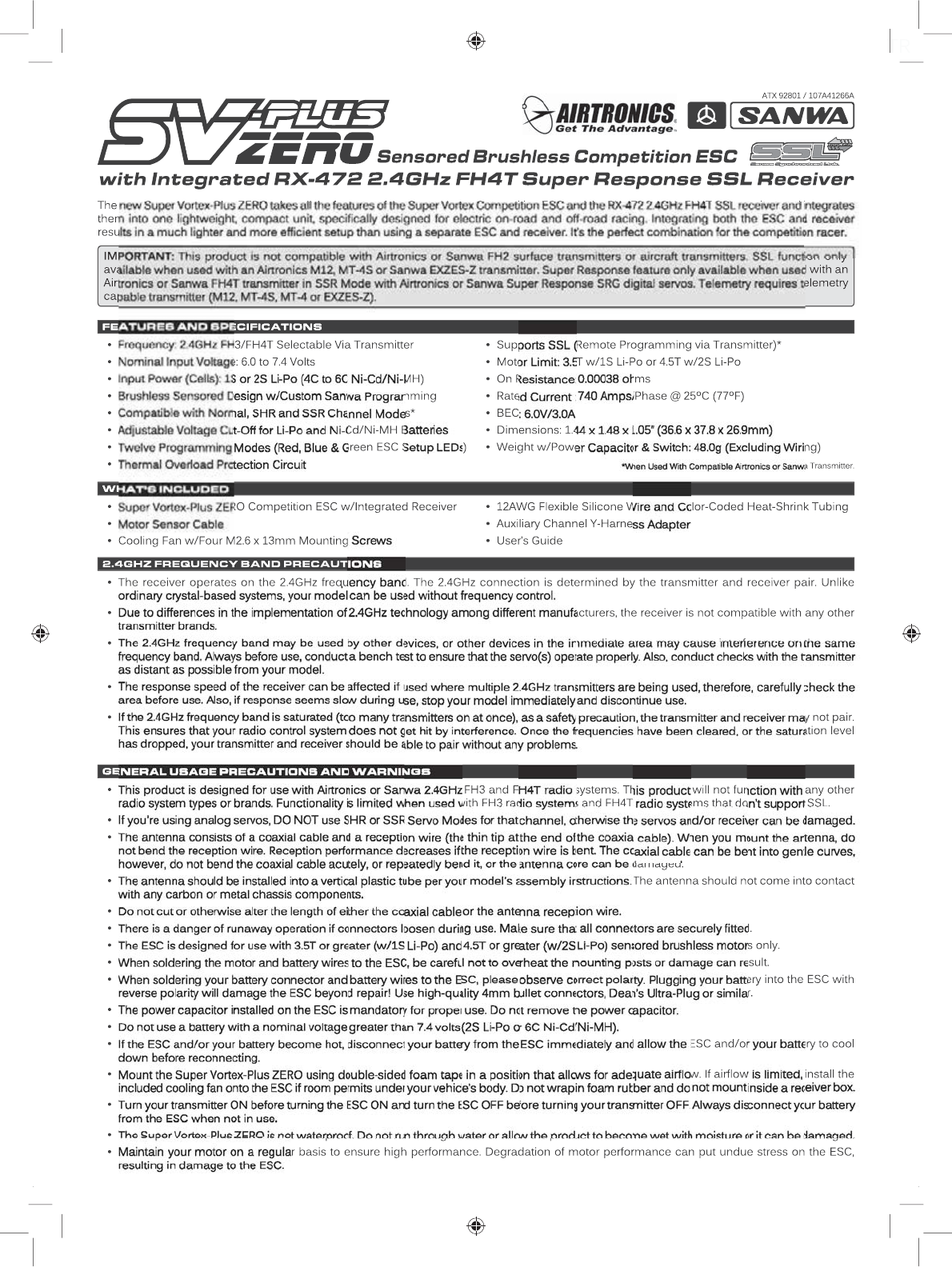
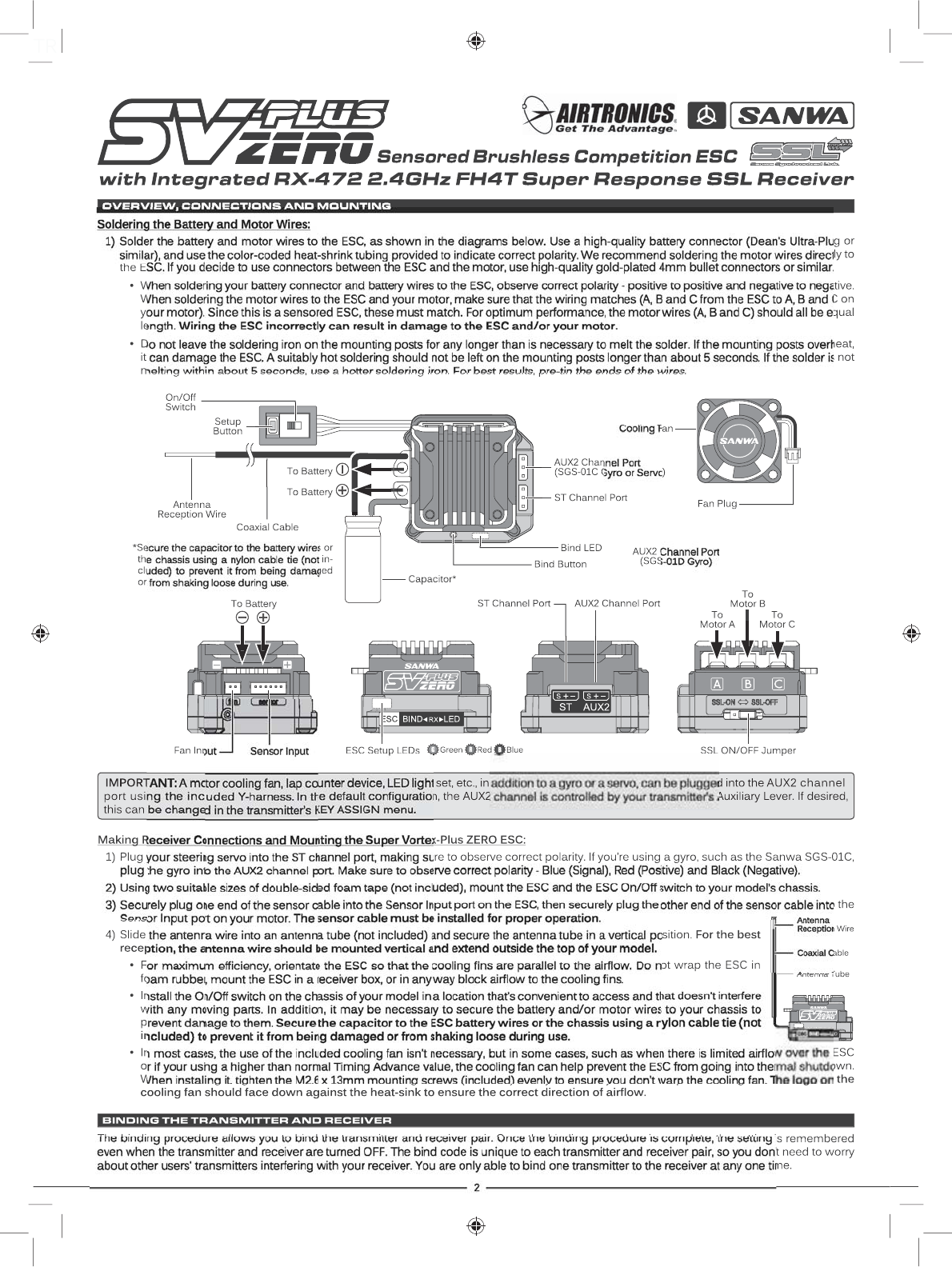
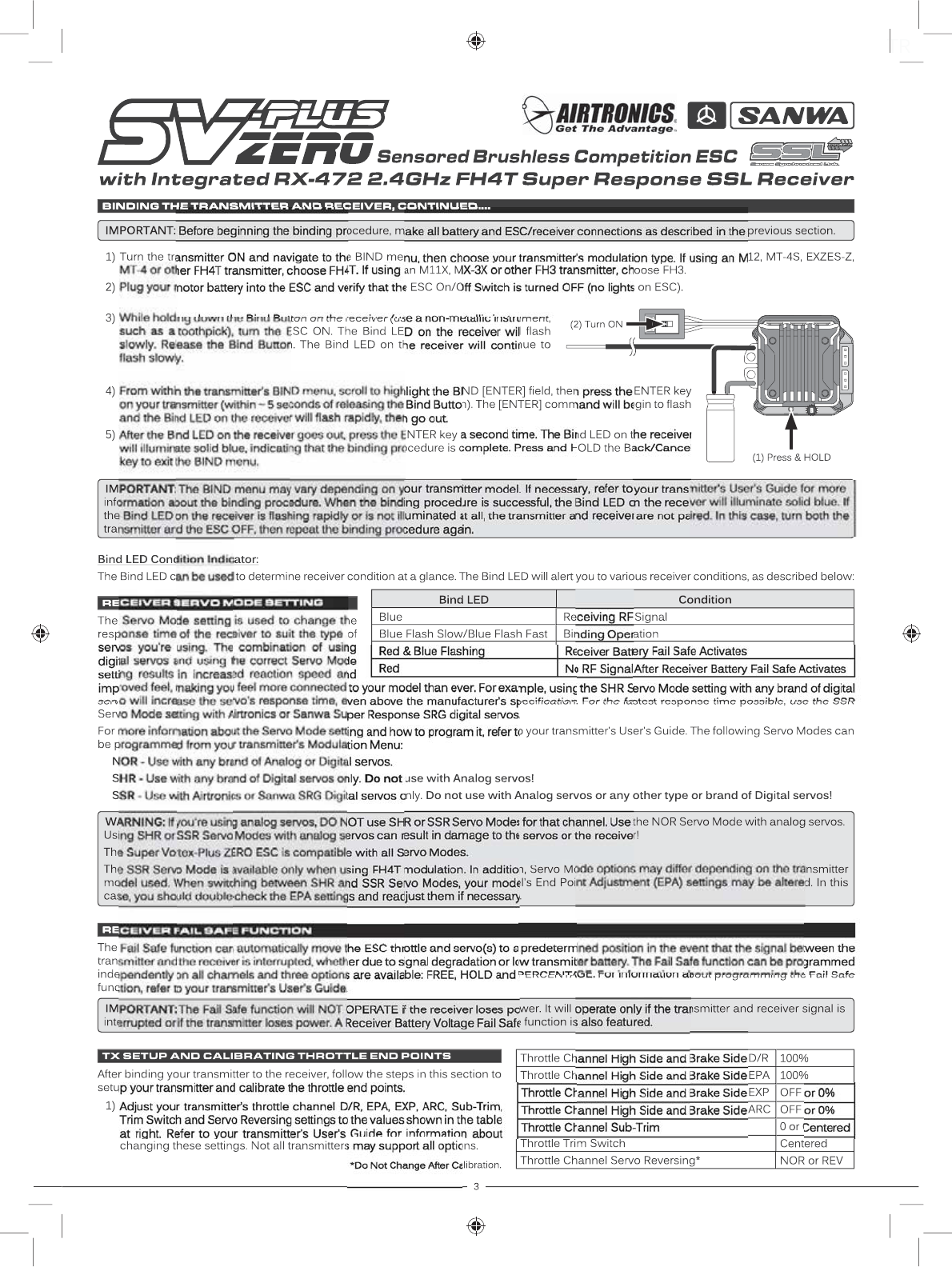
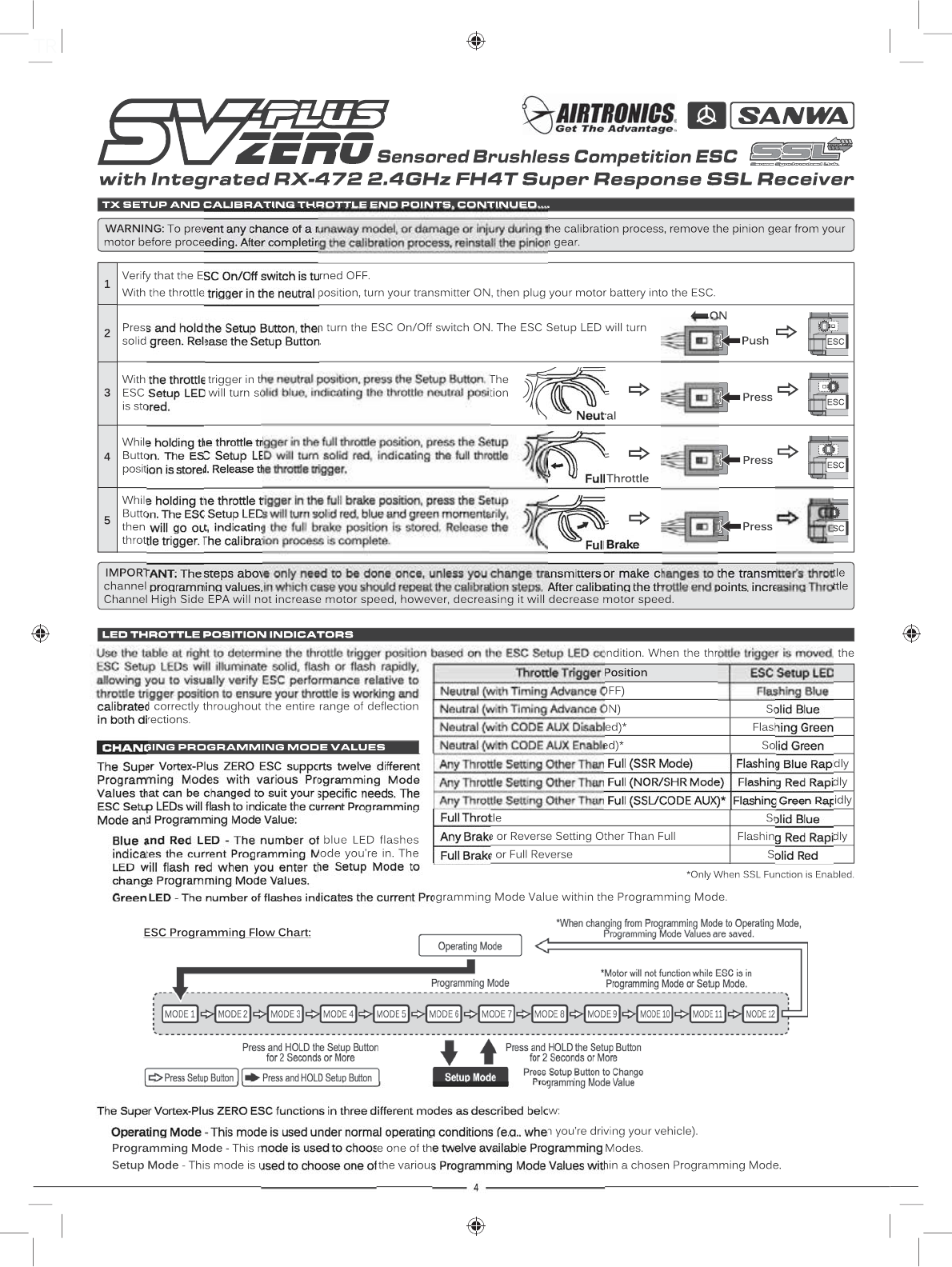
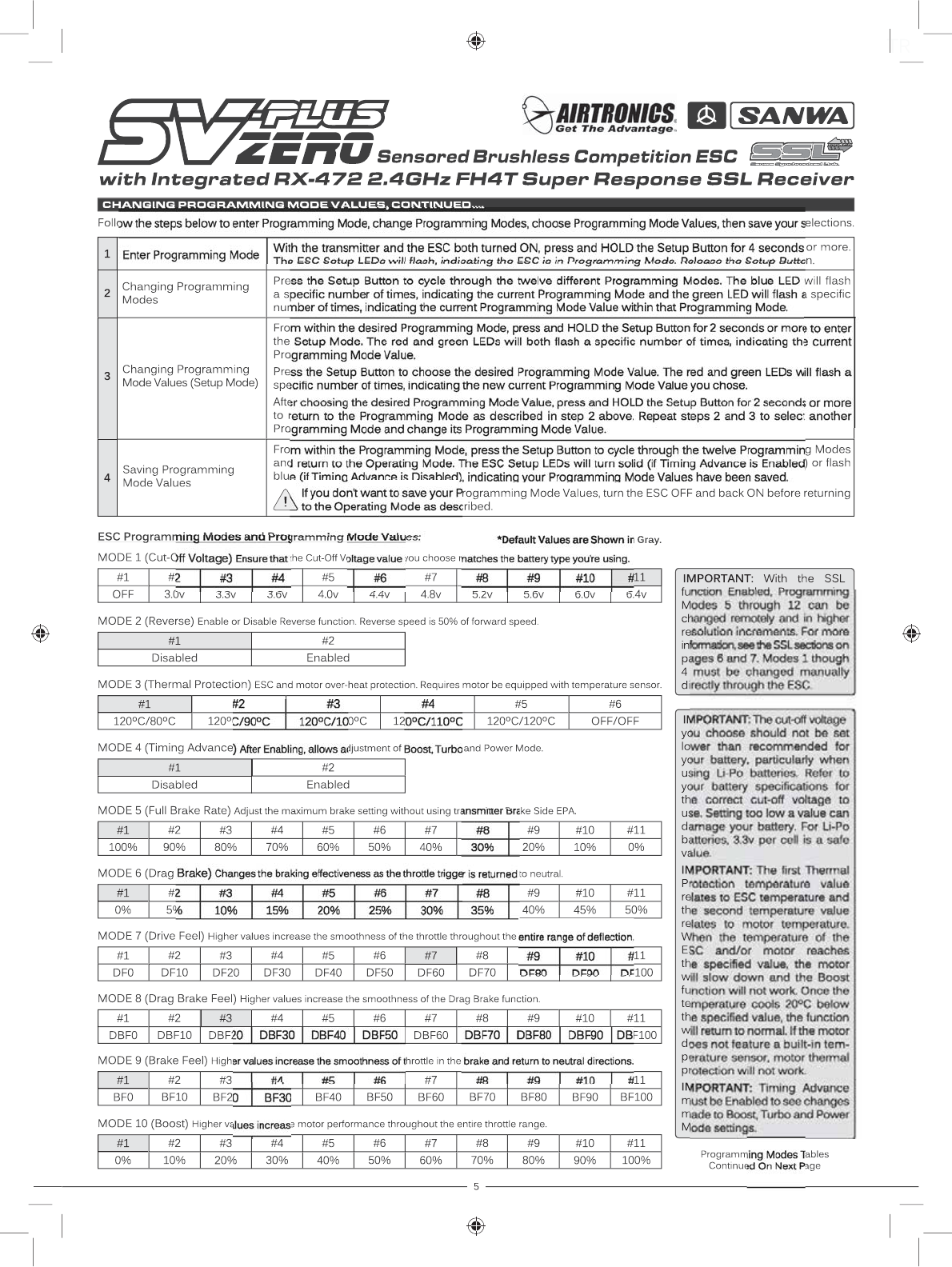
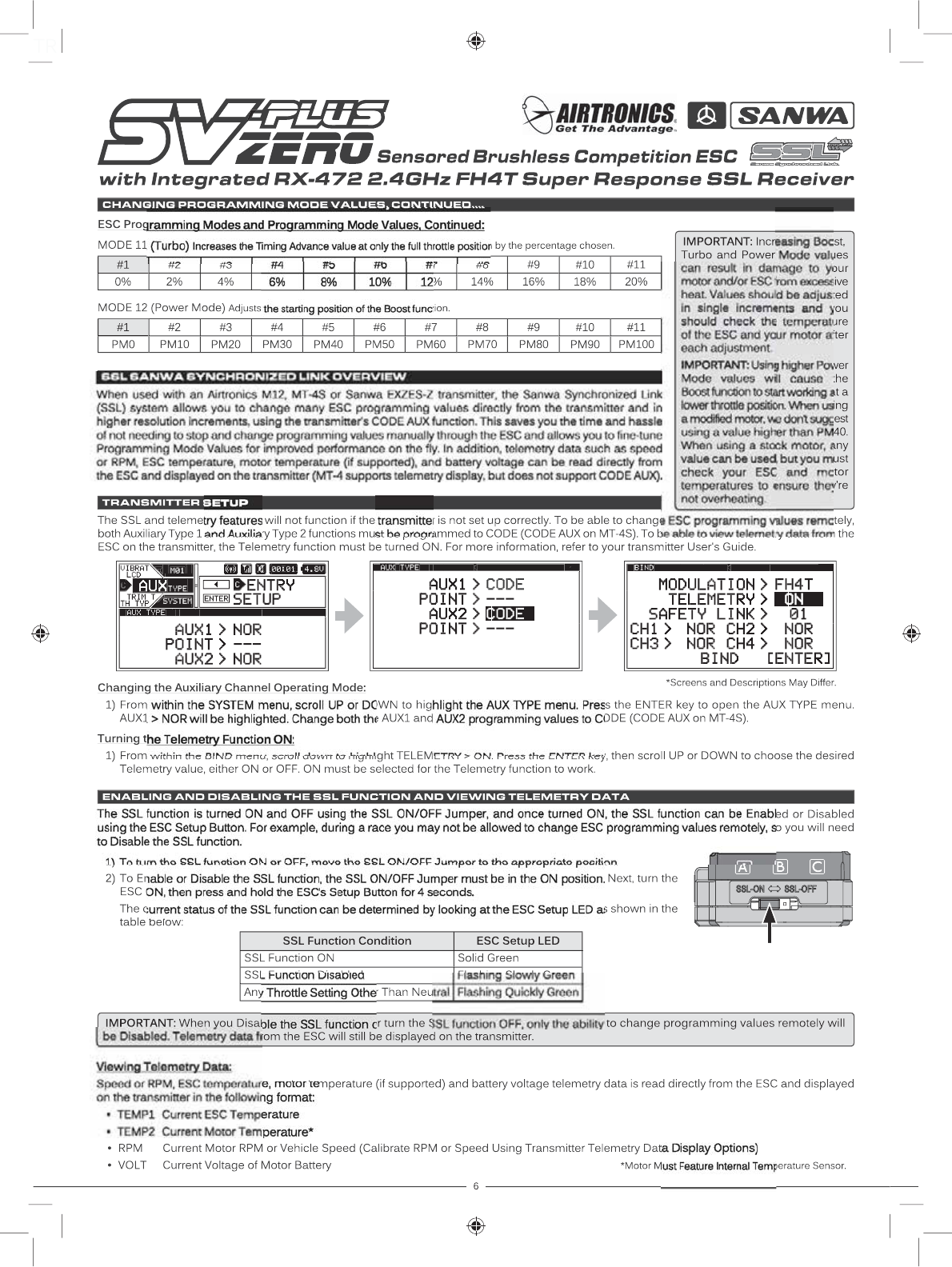
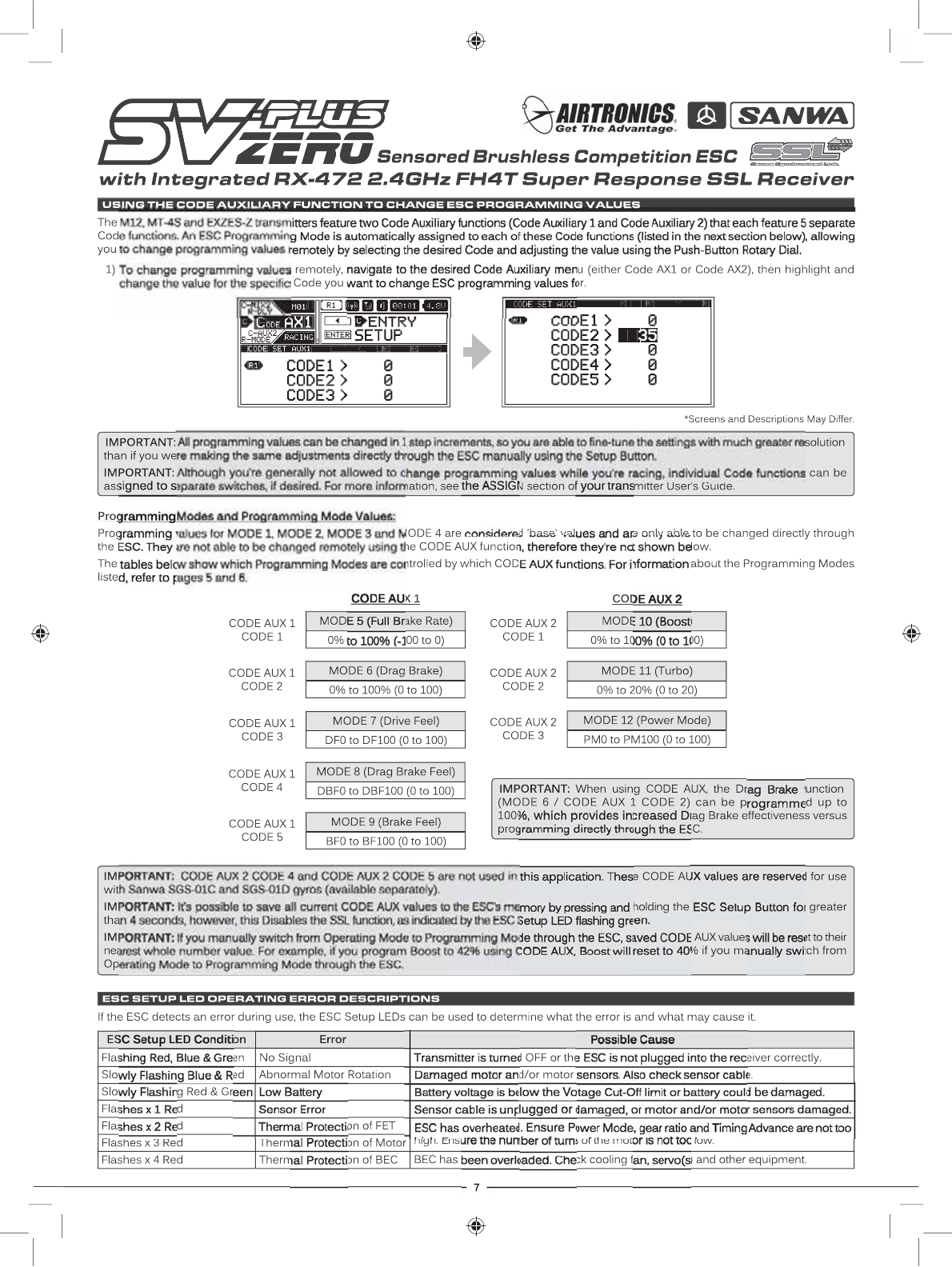
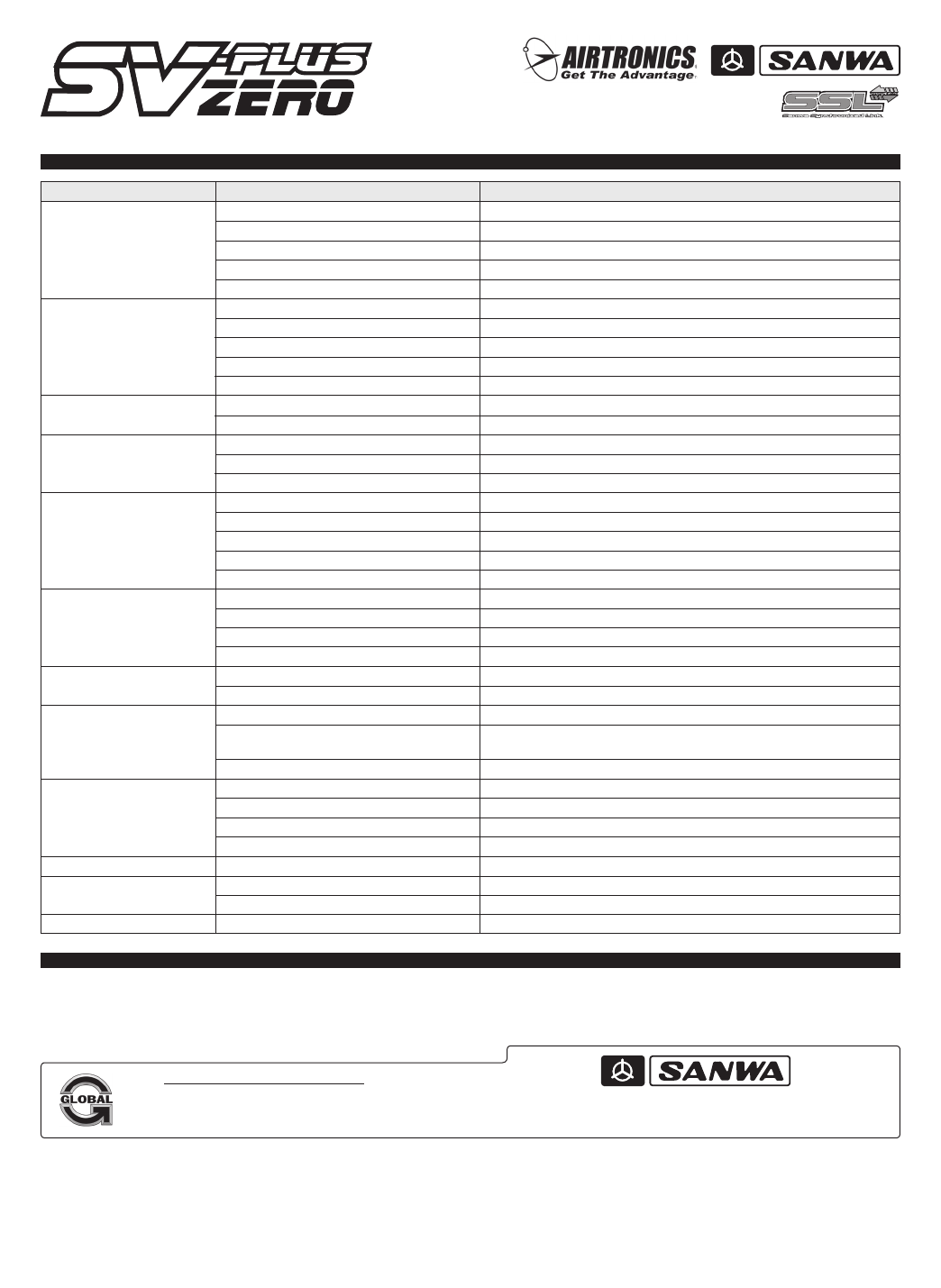
TR
8
The Sanwa Super Vortex-Plus ZERO is warranted against manufacturer defects in materials and workmanship, at the original date of purchase.
This warranty does not cover components worn by use or improper voltage, tampering, modification, misuse, abuse, improper wiring, reverse
polarity, moisture damage or using outside its intended scope of use.
For additional warranty and service information, please contact the Sanwa or Airtronics Distributor in your region. For a list of distributors in
your region, please visit www.sanwa-denshi.com/rc/distributors.html.
Sanwa Electronic Instrument CO., LTD.
1-2-50 Yoshida-Honmachi
Higashiosaka, Osaka, 578-0982 Japan
Global Hobby Distributors
18480 Bandilier Circle
Fountain Valley, CA 92708
Distributed In North America By:
Telephone: (714) 963-0329
Fax: (714) 964-6236
Email: service@airtronics.net
Telephone: 81-729-62-1277
Facsimile: 81-729-64-2831
Email: rcintl@sanwa-denshi.co.jp
Features and Specifications are Subject to Change Without Notice. All contents © 2015 Sanwa Electronic Instrument CO., LTD. All Rights Reserved. Revision 1 01.19.2015
Problem
Servo works, but motor
does not work
Both the servo and motor
do not work
Motor runs backward
Motor runs slowly or has no
acceleration
ESC overheating and going
into thermal shutdown
ESC works intermittently
No Reverse function
Transmitter will not bind to
receiver
Inadequate transmitting
range
No Telemetry displayed
SSL function not working
Bind LED solid red
Cause
Incorrect Connection
Thermal protection activated
Wire or connector is disconnected
Motor wires are connected incorrectly
Motor and/or ESC is damaged
Transmitter and receiver not paired
Incorrect Connection
Battery is discharged
ESC is not turned ON
ESC is damaged
Transmitter is set up incorrectly
Servo reversing changed after calibration
Pinion gear is too large for motor
Battery is faulty or motor is damaged
ESC is damaged
Inadequate cooling
Battery nominal voltage too high
Incorrect gearing or binding in drive-train
Timing Advance value set too high
Damaged motor
ESC going into thermal shutdown
Loose connection
Excessive moisture infiltrated ESC
ESC is damaged
Reverse function Disabled
Transmitter Anti-Lock Brake function Enabled
Modulation Type incorrect
Too much time elapsed after pressing
receiver Bind Button
Attempting to bind incompatible transmitter
Using incorrect Binding procedure
Low transmitter battery voltage
Receiver antenna mounted incorrectly
Receiver and/or ESC damaged
Telemetry function not Enabled
SSL function Disabled or not turned ON
Auxiliary Type not set to CODE
Battery Voltage Failsafe function activated
Solution
Verify all connections are correct, including correct polarity
Allow ESC to cool down sufficiently
Verify that all connections are tight and secure
Reconnect motor wires correctly per connections diagram
Replace or repair motor and/or ESC
Bind transmitter and receiver
Verify all connections are correct, including correct polarity
Fully charge battery
Turn ESC ON
Contact your regional distributor for repair options
Set up transmitter and repeat throttle calibration steps
Change servo reversing setting or repeat calibration steps
Use smaller pinion gear
Replace battery or repair or replace motor
Contact your regional distributor for repair options
Use cooling fan. Improve airflow over ESC
Use recommend battery
Adjust gearing or repair drive-train
Lower Timing Advance value or turn Timing Advance OFF
Repair or replace motor
See ESC overheating and going into thermal shutdown above
Check all connections to ensure they’re tight
Unplug all connections and allow ESC to dry out
Contact your regional distributor for repair options
Enable reverse function
Disable transmitter Anti-Lock Brake function
Change Modulation Type to FH4T
Quickly press ENTER key in BIND menu after releasing receiver Bind
Button
Use only Airtronics or Sanwa 2.4GHz FH4T surface transmitters
Follow Binding procedure carefully
Replace or recharge transmitter batteries
Mount antenna in a vertical tube as recommended
Contact your regional distributor for repair options
Enable Telemetry function within transmitter
Enable SSL function using jumper pin on ESC, then turn SSL function ON
Set Auxiliary Type 1 and Auxiliary Type 2 within transmitter to CODE
Turn Battery Voltage Failsafe function within transmitter OFF
This device complies with Part 15 of the FCC Rules. Operation is subject to the following two
conditions:
(1) this device may not cause harmful interference, and
(2) this device must accept any interference received, including interference that may cause
undesired operation.
Note: This equipment has been tested and found to comply with the limits for a Class B digital
device, pursuant to part 15 of the FCC Rules. These limits are designed to provide reasonable
protection against harmful interference in a residential installation. This equipment generates,
uses and can radiate radio frequency energy and, if not installed and used in accordance with the
instructions, may cause harmful interference to radio communications. However, there is no
guarantee that interference will not occur in a particular installation. If this equipment does
cause harmful interference to radio or television reception, which can be determined by turning
the equipment off and on, the user is encouraged to try to correct the interference by one or more
of the following measures:
—Reorient or relocate the receiving antenna.
—Increase the separation between the equipment and receiver.
—Connect the equipment into an outlet on a circuit different from that to which the receiver is
connected.
—Consult the dealer or an experienced radio/TV technician for help.
changes or modifications not expressly approved by the party responsible for compliance could
void the user's authority to operate the equipment.
The device complies with industry Canada license-exempt RSS standard(s). Operation of this
device is subject to the following two conditions: (1) this device may not cause interference, and
(2) this device must accept any interference, including interference that may cause undesired
operation of the device.
Le présent appareil est conforme aux CNR d'Industrie Canada applicables aux appareils radio
exempts de licence. L'exploitation est autorisée aux deux conditions suivantes : (1) l'appareil ne
doit pas produire de brouillage, et (2) l'utilisateur de l'appareil doit accepter tout brouillage
radioélectrique subi, même si le brouillage est susceptible d'en compromettre le
fonctionnement."
Industry Canada ICES-003 Compliance Label:
CAN ICES-3 (B)/NMB-3(B)
0